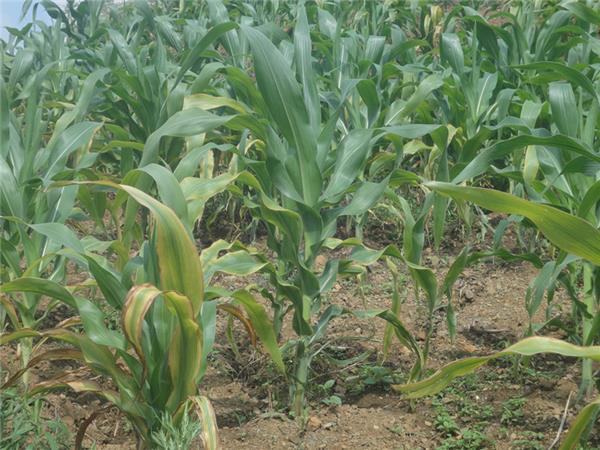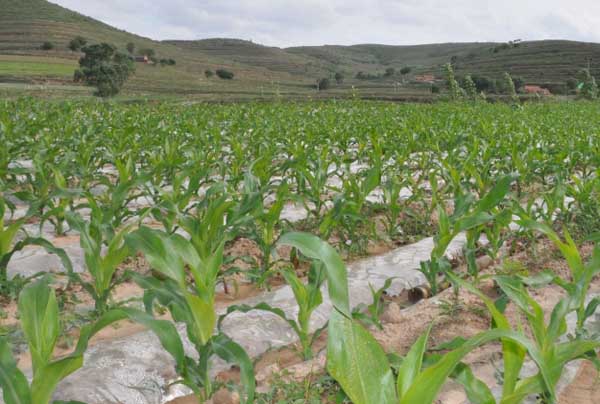What are the diseases and insect pests of corn?
The main pests in corn field include underground pests, corn borer, aphids and so on. In recent years, the abnormal climate has created conditions for the occurrence of different pests, and the harm to maize production has become more and more serious year by year. However, farmers ignore the prevention and control of these insect pests for various reasons, resulting in unnecessary losses. Here, according to the living habits of different pests, combined with our practical experience, the author summarizes the following control methods for the majority of farmers for reference.

What are the diseases and insect pests of corn?
1. The main pests of corn are corn borer and aphids. Corn borer can cause corn mosaic, drill stalk, harm female ear and male ear.
The control of corn borer should be controlled at the end of heart and leaf, using the method of "three fingers and one pinch" and losing heart with 1.5% phoxim granules at the dosage of 1.5 kg per mu, the control effect is obvious. You can also use 1000 times of pyrethroid pesticides mixed with water or 1000 times of phoxim emulsion to remove the spray head of the sprayer and spray the solution into the heart leaves. For aphids of 12582 rural information network, drawing male and cutting male can reduce their harm to a certain extent, and can also be sprayed with 1000 times of dimethoate EC or 10% imidacloprid.

2. The main diseases are: sheath blight, powdery mildew, and large and small spot, etc.
Sheath blight is mainly caused by leaf sheath and ear, followed by stem. After the onset of the disease, the leaves were initially light brown patches, sometimes waterlogged, and the disease began from the basal leaf sheath and gradually developed to the upper part of the plant. When the disease developed to the ear, a large moire disease spot was also formed on the ear bud, and soon, all the upper stems and leaves withered, and then the whole ear dried up. Maize leaf spot occurs in the late growth stage, which mainly harms the leaves. The disease spot is large but few, and when it is serious, the whole field is withered and yellow. Maize leaf spot can occur in the whole growth period, harming leaves, leaf sheaths and bracts. Corn smut forms a gray bag in the affected part, which is wrapped in a gray-white film, which is scattered with black-brown powder after the film is broken, which is infectious.
Control methods: for the prevention and control of powdery mildew, 150 grams of 25% rust rather wettable powder and 50 kg seeds can be used to prevent it. If a plant with smut is found in the field, it should be pulled out in case of emergency. In the early stage of leaf spot disease, remove the lower 2-3 diseased leaves in time; spray with 400-500 times of 70% mancozeb wettable powder, 70% methyl thiophanate or 50% carbendazim wettable powder 500-800 times to control sheath blight and leaf spot.

First of all, let's talk about the management of underground pests. For underground pests, such as mole cricket, grub, ground tiger, etc., phoxim or 90% crystal trichlorfon can be sprayed on 100 kg chopped weeds after 250 grams of phoxim or 90% crystal trichlorfon is dissolved and sprayed on 100 kg chopped weeds to make poison bait in the evening. It can also be fully sprayed with 1000 times of 25% Kuaishaling EC or 1000 times of 52.5% Fangdi Le EC during the peak period of young larvae.
When controlling corn borer, Trichogramma eggs can be inoculated at the big trumpet mouth stage, and biological control is the most ideal, or pesticides with high efficacy and no residue can be used to improve the edible safety of the products. In the period of male silking, you can also choose 1000 times of 5% Regent suspension or 1000 times of 25% Suishaling EC or 48% chlorpyrifos 100ml to control borer, the overall control effect is more than 90%.

The control of sweet and waxy maize dwarf mosaic virus disease is generally solved by selecting disease-resistant varieties, adjusting sowing date, avoiding susceptible growth period, pest control and disease prevention to control gray planthopper transmission. In addition, sweet and waxy corn should be protected against rodent damage from emergence to harvest. In case of typhoon and rainstorm, it should be drained and toppled in time to reduce losses.
Related
- Wuhan Hospital Iron Tree Blooming Result Was Instantly Frightened by the Gardener Master
- Which variety of camellia is the most fragrant and best? Which one do you like best?
- What is the small blue coat, the breeding methods and matters needing attention of the succulent plant
- Dormancy time and maintenance management of succulent plants during dormancy
- Minas succulent how to raise, Minas succulent plant pictures
- What are the varieties of winter succulent plants
- How to raise succulent plants in twelve rolls? let's take a look at some experience of breeding twelve rolls.
- Attention should be paid to water control for succulent plants during dormant period (winter and summer)
- Watering experience of twelve rolls of succulent plants
- Techniques for fertilizing succulent plants. An article will let you know how to fertilize succulent plants.



